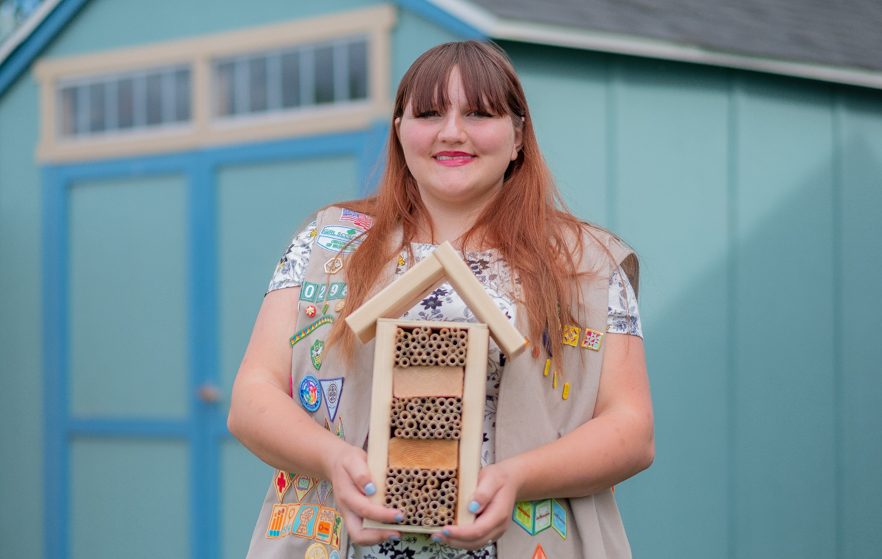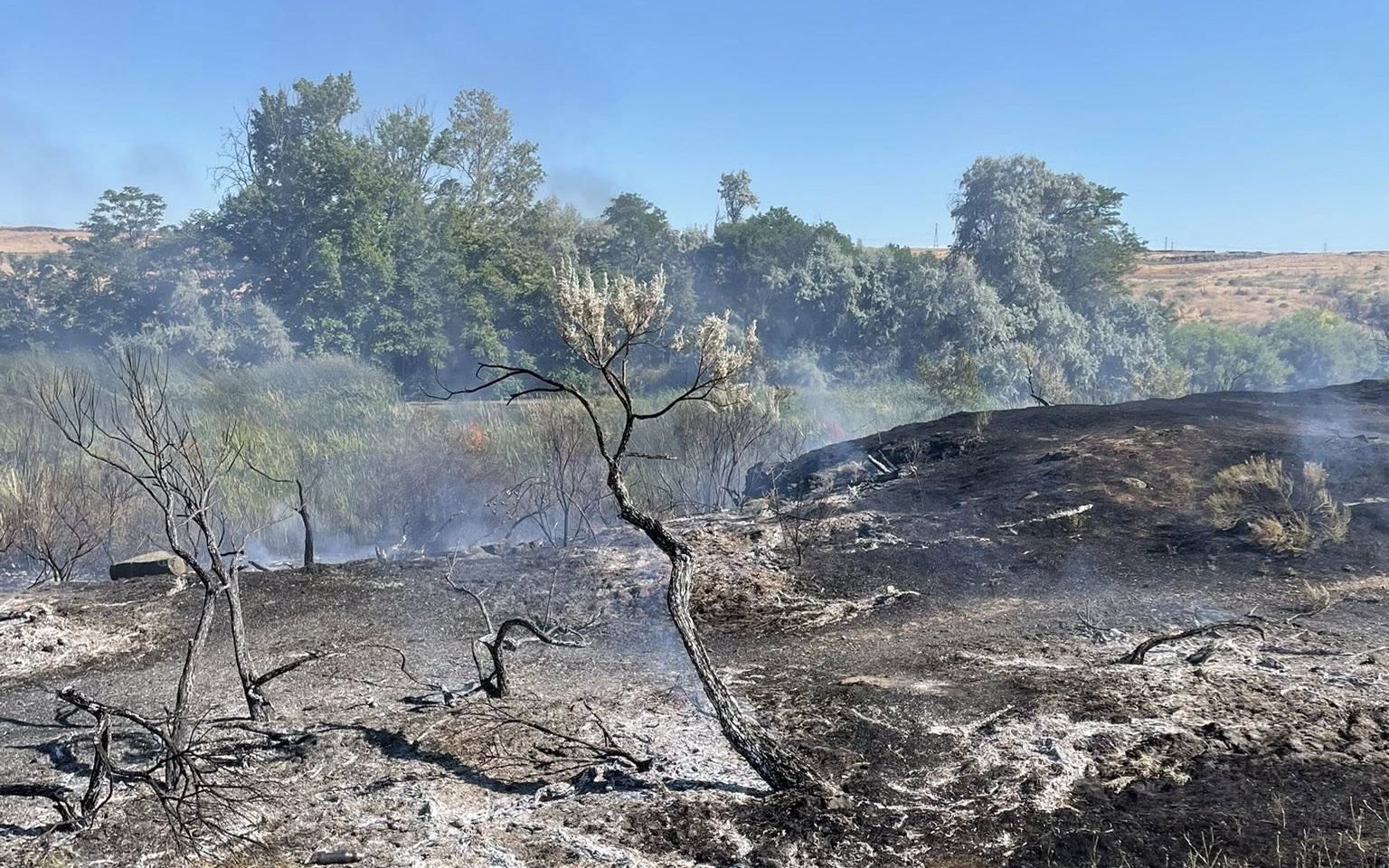Hermiston Girl Scout combats declining bee population to earn Gold Award
Published 9:00 pm Friday, May 16, 2025

- Hermiston Girl Scout Zoey Griffith, 17, discusses her Gold Award-winning “Save the Bees” project, where she built a self-sustaining bee box, and highlights the importance of saving the bee population, on May 12, 2025, at her home in Hermiston. (Yasser Marte/East Oregonian)
HERMISTON — With a few pieces of wood, natural reeds and a passion for protecting pollinators, Hermiston Girl Scout Zoey Griffith earned a Gold Award for her “Save the Bees” project. by building a self-sustaining bee box.
Griffith, 17, a junior at Hermiston High School, built a self-sustaining bee box to solve a community problem and create lasting change to help save bees. She received the highest achievement award in Girl Scouts on April 11 for her efforts.
Griffith said she isn’t exactly sure when her love for bees began, but as a child, she was nicknamed “Bug” because of her fascination with ladybugs. Over time, that interest shifted to bees, which she described as her new obsession.
Trending
“We honestly try to keep a garden every single year, but with the heat and how we don’t really get much rainfall during the summer, it’s kind of hard,” Griffith said. “But we also started to physically see and notice the depletion in the bee population, as the flowers weren’t being pollinated as strongly.”
To help, Griffith said she decided to focus her Girl Scout project on supporting bees. She spoke with two professional beekeepers, researched articles, explored ways to protect the bees and rolled up her sleeves to build a bee box to support the population.
In her backyard, Griffith holds a wooden bee box she and her team designed with birdhouse-like shapes and octagonal features. It took her two and a half hours to build.
“Reed woods are hollow, so we ordered some from Crown Bees online,” she said. “The bees fly into them, fill them with mud and dirt, and lay their eggs inside. We were instructed to place 50 to 75 of them in a compartment.”
However, she noted, the spacing is not ideal.
She said she learned all bee boxes should have a back because pests such as varroa mites, which attract bees, can be a problem. Wasps and birds will try to enter from the back instead of the front, as bees will swarm around intruders entering from the front and heat their bodies, potentially killing them.
Trending
Griffith said the most important function is the reeds, as they are compostable and can be returned to the environment. During winter, if there is a depletion in the hive, a person can cut open the reeds to find the eggs. The eggs then can be placed in the freezer until spring, when they can be transferred to a new reed in the bee box, and they will hatch.
“We’ve placed 27 bee boxes in Oregon and Washington, all with people we personally know and have contacted,” she said.
Griffith also distributed posters and flyers with information about the bee boxes and their role in helping the bee population.
She expressed hope to see an increase in the bee population within the next five to 10 years. While that may seem far off, she noted that bees are only active for about six months of the year. Her main goal is to reach a point where bees are no longer on the brink of extinction. She said the local bee population has decreased more than 500,000 since 2017, a significant loss in just eight years.
Griffith has been part of Girl Scouts since she was 5 years old. While she acknowledges her time in Girl Scouts is coming to an end, she is determined to continue her bee conservation efforts.
“I love bees too much to stop,” she said.
Each summer, Griffith works at a Girl Scout camp on the beach in Florence and also helps at camps in Washington.










